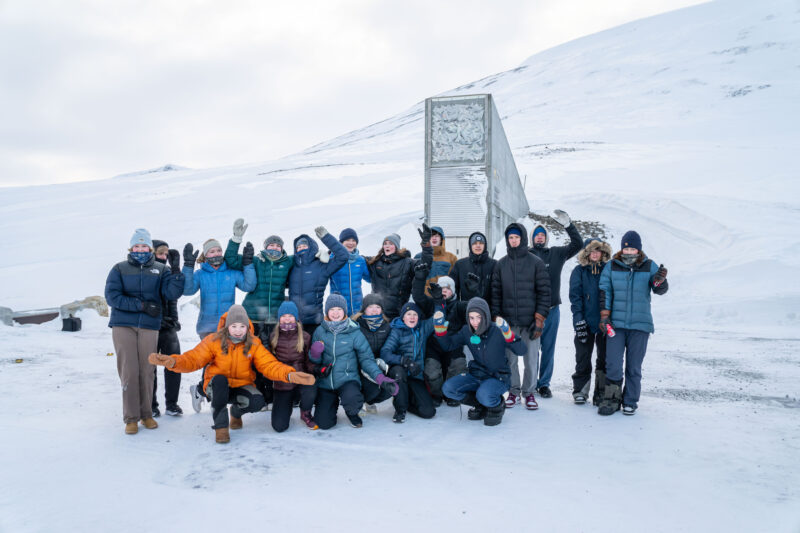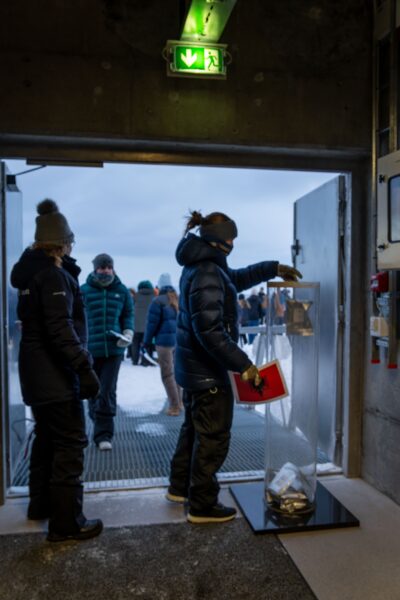On the occasion of the 15th anniversary, it was Svalbard’s young people who laid down seed bags in a large glass tube. It was the same glass tube which from the Graminor, the Norwegian Plant Breeding Company that makes new varieties of our food crops. The seed bags contain seeds of wheat, oats, barley and peas – 20 modern seed varieties adapted to Norwegian agriculture. These are varieties that Norwegian farmers can choose from when they grow food and feed crops.
This is a great reminder that the seeds contained in the Seed Vault have made modern grains and bean varieties possible. And that the day Norwegian farmers no longer cultivate these, they will be secured here in Svalbard for the benefit of future generations.
 Photo: Photo: Ragnhild Utne/Management Consultant
Photo: Photo: Ragnhild Utne/Management Consultant
Svalbard Global Seed Vault – the world’s largest backup facility for seeds
Since the Seed Vault was inaugurated in February 2008, more than 1.2 million seed samples of agricultural and food plants have now been stored inside the mountain halls in Svalbard. The seeds have been sent as a backup of seed collections from 98 institutions in 76 countries.
Storing the seeds in Svalbard is not a symbolic act – it is part of countries insurance policy against the loss of crop diversity of importance to food security. Natural disasters such as earthquakes and floods, man-made acts such as war and unrest, and unfortunate circumstances such as long-term power outages could affect plant diversity, and thus the basis for future agriculture. A legacy and a task that we pass on to young and future generations. It is therefore positive that Svalbard’s young people see the importance of taking care of the Seed Vault.
 Photo: Photo: Ministry of Agriculture and Food
Photo: Photo: Ministry of Agriculture and Food
